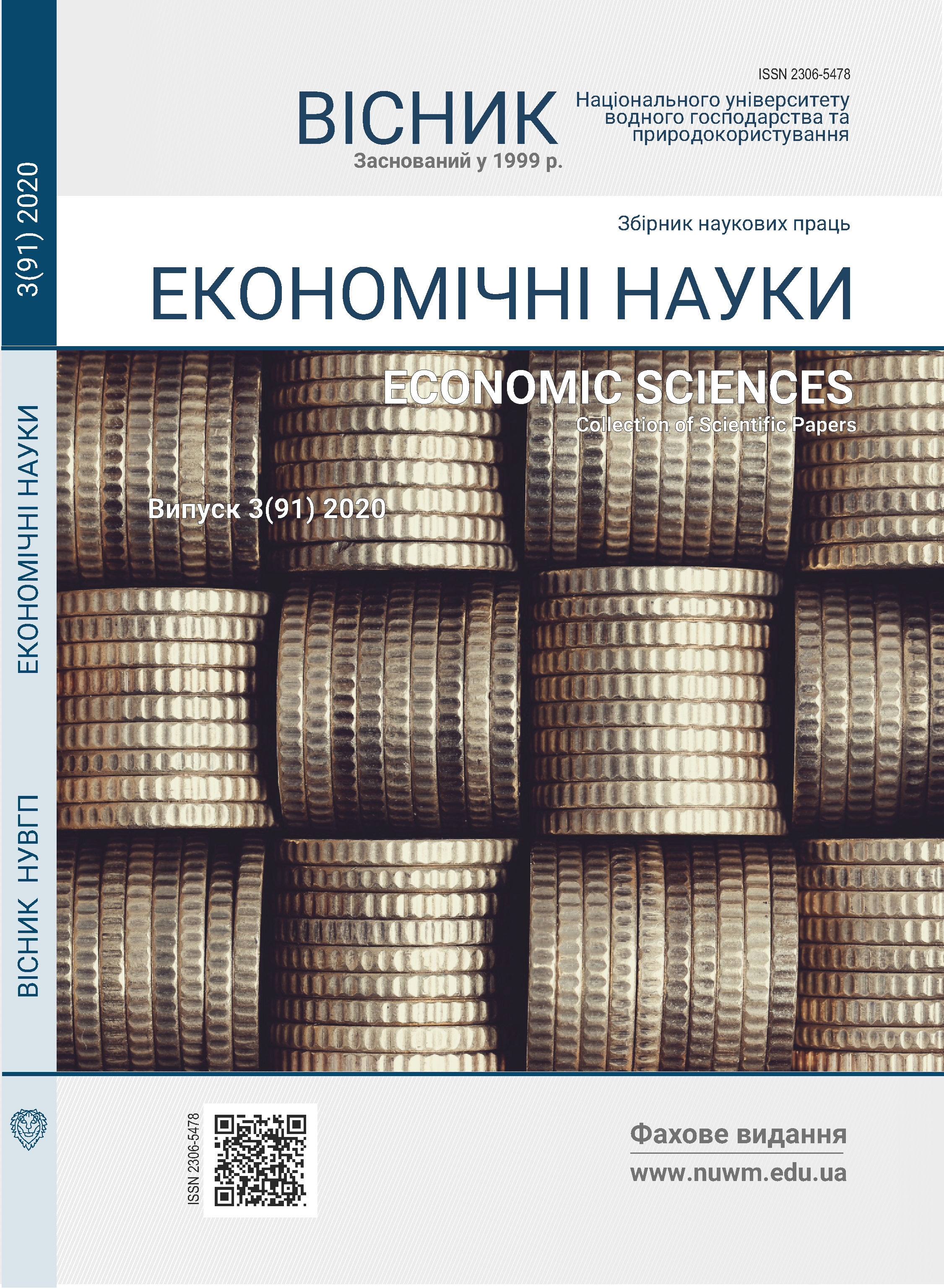INFORMATION SYSTEMS IN COMMERCIAL ACTIVITY AND CRITERIA FOR EVALUATING THEIR EFFICIENCY
DOI:
https://doi.org/10.31713/ve320205Keywords:
information systems, multicriteria evaluation, integrated efficiency, automation, information technologies.Abstract
The article considers information systems in commercial activity. It isproved that in competitive market conditions the introduction and use ofinformation technology becomes an essential factor of successfulcommercial and production activities. It is important to determine theeffectiveness of information systems and their components. To do this, it is necessary to identify a set of appropriate criteria, apply adequate tools and models for their comparison and analysis. In particular, the use ofmulticriteria evaluation methods is proposed.The problem of evaluating the effectiveness of implementation and useof information systems to improve the commercial activity of enterprises is considered. It is established that the effective use of modern information systems for support, support and model business processes is becoming one of the decisive competitive advantages in today’s market conditions. But the lack of reliable statistical information, significant uncertainties and ambiguities in the indirect determination of the cumulative economic effect of the implementation of information systems make the use of classical expert and probabilistic methods difficult, and sometimes simply impossible. In such conditions, the most appropriate is the use of methods of multicriteria analysis.When using the fuzzy-multiple approach to the definition of integratedefficiency, it is advisable to structure the expected results into severalgroups. One of them includes direct economic results that are wellcalculated and measured (expenditures, profits and the like). Another ismore complex financial effects, which are difficult to directly, directlymeasure and fix (for example, changes in the value of shares, fixed assets of the company, various risk components). The information components should be singled out. Finally, there are socially-oriented results that affect both the staff of the enterprise and the environment (customers, customers, competitors, retail customers).It is noted that in any case the definition of a specific set, evaluation ofcriteria, construction of rules of fuzzy inference should be based on expert assessments taking into account the competence of experts, theirrepresentativeness, specifics of the subject area (industry and direction ofdevelopment, implementation, use of information system).References
Дорохов О. В. Оцінювання корпоративних інформаційних систем на основі нечіткого моделювання. Математичні методи, моделі та інформаційні технології в економіці : матеріали I Міжнар. наук.-метод. конф., 1–4 квітня 2009. Чернівці : ДрукАрт, 2009. С. 161–163.
Dorokhov O. Using of Information Technologies for Support of Wholesale Pharmaceutical Firm’s IndustrialCommercial Activity for Drug’s and Medical Product’s Distribution. Business Informatics in Central and Eastern Europe : 1st CEE Symposium, 25–27 February 2009. Vienna. Р. 404–409.
Золотарева И. А. Методы оценки эффективности информационно-технологических проектов. Управління розвитком : зб. наук. робіт. Х., 2008. № 14. С. 70–71.
Zolotaryova I. Problems of IT economic efficiency estimation. Управління розвитком : зб. наук. праць. Х., 2008. № 14. С. 86–87.
Дорохов О. В. Основи нечіткого моделювання впливу факторів зовнішнього середовища на функціонування підприємств. Збірник наукових праць Харківського національного університету Повітряних Сил. Х., 2008. Вип. 2 (17). С. 124–127.
Денисенко М. П. Інформаційне забезпечення ефективного управління підприємством. Економіка та держава. 2010. № 7. С. 19–25.
Гейтс Б. Бизнес со скоростью мысли. М. : ЭКСМОПресс, 2001. 480 с.
Самуйлов К. Е. Основы формальных методов описания бизнес-процессов : учеб. пособ. М. : РУДН, 2011. 123 с.
Інформаційні системи і технології в комерційній діяльності : підручник / Ананьєв О. М., Білик В. М. та ін. Львів : Новий Світ-2000, 2006. 584 с.
Дятлова Н. В., Бублікова Н. Ф. Інформаційні системи і технології в комерційній діяльності : навчально-методичний посіб. НМЦ, 2005. 162 с.

